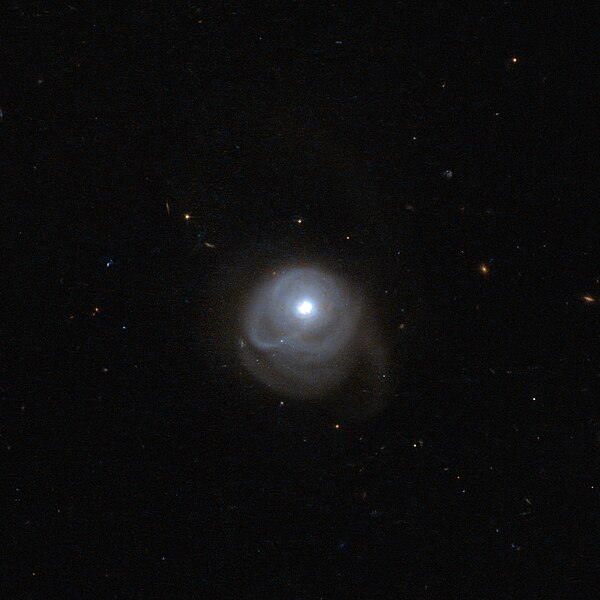NGC 6240, also known as the Starfish Galaxy, is a nearby ultraluminous infrared galaxy (ULIRG) in the constellation Ophiuchus. The galaxy is the remnant of a merger between three smaller galaxies. The collision between the three progenitor galaxies has resulted in a single, larger galaxy with three distinct nuclei and a highly disturbed structure, including faint extensions and loops.
At the centre of NGC 6240 there are three supermassive black holes spiraling closer and closer to one another.
X-ray image of NGC 6240 taken with the Chandra X-Ray Observatory, superimposed on an optical image of the galaxy. The X-ray emission from the two active galactic nuclei can be seen as bright blue point sources. Credit: NASA
Arp 148, VV 340, Arp 256, NGC 6670, NGC 6240, ESO 593-8, NGC 454, UGC 8335, NGC 6786, NGC 17, ESO 77-14, NGC 6050
Hubble and Keck observatories uncover black holes coalescing.
Luminous infrared galaxies or LIRGs are galaxies with luminosities, the measurement of brightness, above 1011 L☉. They are also referred to as submillimeter galaxies (SMGs) through their normal method of detection. LIRGs are more abundant than starburst galaxies, Seyfert galaxies and quasi-stellar objects at comparable luminosity. Infrared galaxies emit more energy in the infrared than at all other wavelengths combined. A LIRG's luminosity is 100 billion times that of the Sun.
IRAS 14348-1447 is an ultraluminous infrared galaxy, located over a billion light-years away.
South America Galaxy taken by the Hubble Space Telescope
2MASX J05210136-2521450.
Ultraluminous Infrared Galaxy IRAS 19297-0406








